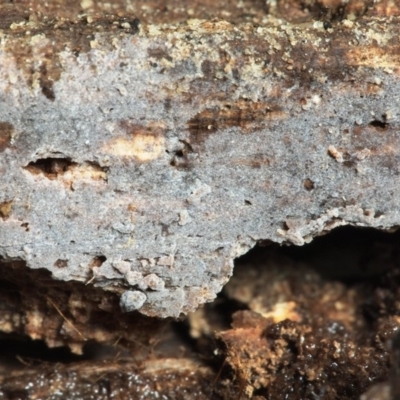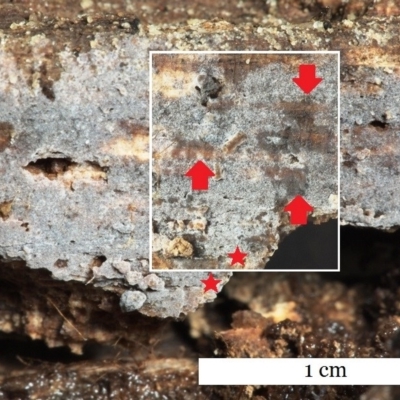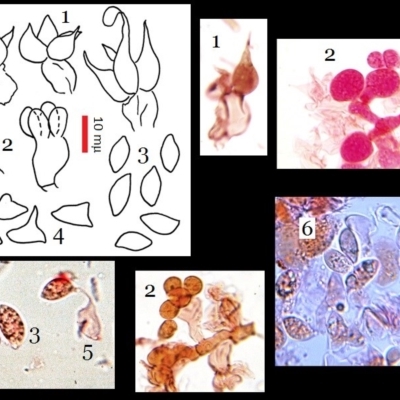Tulasnella pallida
This species produces fruit bodies on dead wood. At arm's length you see, at best, a greyish wash (perhaps with a hint of violet) and on looking closer you see only a very thin, featureless and slightly fuzzy, grey or violaceous grey coating on the wood.
Identification even to genus requires a look at microscopic features.
A technical note: Tulasnella is a basidiomycete genus. The basidium is not septate and the sterigmata start as globular outgrowths. In general, a mature sterigma has a narrow base above which it is swollen but then tapers to a sharp apex. A mature sterigma is cut off from the basidium by a cross wall, the basidium may shrivel and it is common to see the four sterigmata, well inflated, still attached to the shrivelled basidium. These features make it easy to identify the genus microscopically. Once you have recognized the genus, the species Tulasnella pallida is readily identified by these microscopic features: the hyphae have simple cross-walls (or, technically, they lack clamp connections); spores are ellipsoid to fusiform (and predominantly mostly the latter, meaning broader in the middle and tapering at each end), mostly within the size range 8-12 x 4-6 microns.
Gallery
Regional distribution
Tulasnella pallida is listed in the following regions:









